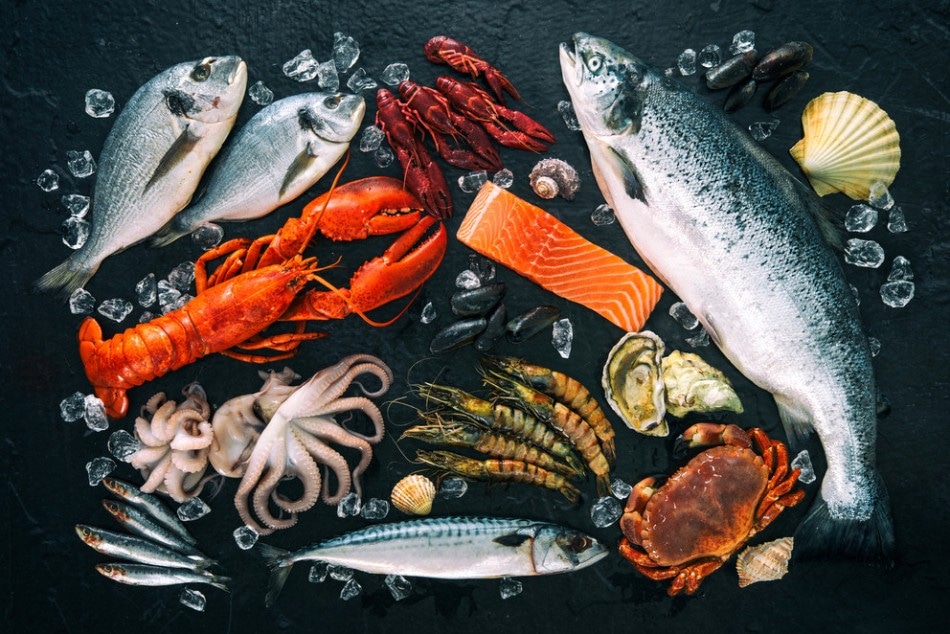Dec 18 2018
According to a team of international researchers, an edible, biodegradable film made with antimicrobial compounds and plant starch may regulate the growth of foodborne pathogens on seafood.
 “If you put the antimicrobial into an edible film, and then dip the shrimp into the film and pull it out, that film is going to form around the shrimp. The film then releases the antimicrobials over time,” said Catherine Cutter, professor of food science. (Image credit: Getty Images/Alex Raths)
“If you put the antimicrobial into an edible film, and then dip the shrimp into the film and pull it out, that film is going to form around the shrimp. The film then releases the antimicrobials over time,” said Catherine Cutter, professor of food science. (Image credit: Getty Images/Alex Raths)
We have the ability to develop a film with antimicrobial activity that can kill foodborne pathogens on food surfaces. Given the recent outbreaks that we have seen with a number of food products, coming up with something that can be used by the industry to kill microorganisms on the surfaces of food is a noble area of research to investigate.
Catherine Cutter, Professor of Food Science, Pennsylvania State University.
Bacterial pathogens, like salmonella and vibrio, can potentially contaminate seafood. While vibrio pathogens occur naturally in marine environments, salmonella can contaminate seafood at the time of processing or production. Consumption of seafood contaminated with these types of bacteria can cause gastrointestinal problems. Since both types of bacteria can endure freezing conditions over a long term, the contamination of these bacteria is a major cause of concern for the seafood sector.
Bacteria are not destroyed through freezing. Yet, when food is frozen, ice crystals tend to form because of the presence of water in food. According to Cutter, the ice crystals can serve like “daggers,” penetrating the bacterial cell wall and causing damage to the cell.
“Vibrio and salmonella are somewhat susceptible to freezing,” stated Cutter. “So, if you treat bacterial cells with antimicrobials and then freeze them, the approach can be more lethal.”
Thailand researchers utilized a mixture of a gelatin coating containing antimicrobials called Nisin Z and lauric arginate (LAE), a thermoplastic starch, and tapioca powder—a biodegradable polymer made from cassava.
The research team in Thailand subsequently produced a “culture cocktail” of the bacteria and vaccinated slices of big-eye snapper and tiger prawn. Using varied compositions of Nisin Z and LAE, the experimentally vaccinated seafood samples were tested to see which kind of variations would provide the “best kill.” After the samples were dipped into the edible film containing antimicrobials, some of the food slices were chilled and vacuum-packaged for about a month, while other food samples were frozen for about three months.
If you just dip shrimp into any antimicrobial—it’s not going to stick very well. But if you put the antimicrobial into an edible film, and then dip the shrimp into the film and pull it out, that film is going to form around the shrimp. The film then releases the antimicrobials over time.
Catherine Cutter, Professor of Food Science, Pennsylvania State University.
Cutter also highlighted that a “controlled release” of the antimicrobials over time is important to obtain the “maximum kill,” which is realized through the special properties of the edible film. If the antimicrobials are directly applied onto the food products, it would cause the antimicrobials to dilute or drip off.
“If you’re going to make an edible film, you want to make a film that has similar properties to plastic,” Cutter stated. “You want these edible films to be transparent because consumers aren't going to buy something they can’t see, you want them to be flexible, and you want the film to mold to the food product. By using edible films, you are doing it in a way that is biodegradable.”
According to Cutter, a major challenge faced by the food sector is how to reduce the dependence on plastic packaging—something the industry has been utilizing for the past four to five decades.
How do you get the industry to change something they and consumers are so used to using? This research demonstrates, through proof of concept, that antimicrobial edible films work. So how do we get this type of packaging into a commercial application? That’s the next logical step in the progression of this type of research.
Catherine Cutter, Professor of Food Science, Pennsylvania State University.
The study findings will be reported in a paper in the February 2019 issue of the International Journal of Food Microbiology.
Rinrada Pattanayaiying, Prince of Songkla University, Thailand; Amporn Sane, Kasetsart University, Thailand; and Penchom Photjanataree, Thailand Institute of Scientific and Technology also took part in this project.